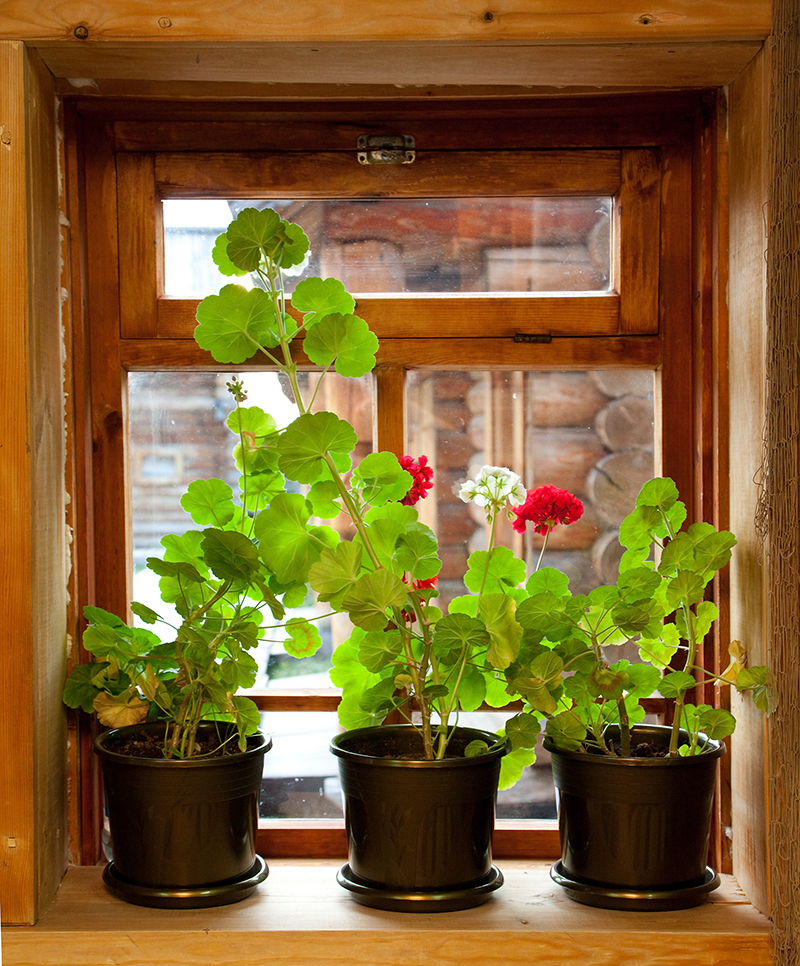Caring for Poinsettias to Ensure Their Lasting Splendor
Posted on 03/07/2025
Caring for Poinsettias to Ensure Their Lasting Splendor
Poinsettias (Euphorbia pulcherrima) are one of the most iconic plants of the holiday season, gracing homes and public spaces with their vibrant bracts and lush green foliage. Nonetheless, many people struggle to keep these beautiful plants thriving past the holiday festivities. By understanding and applying essential poinsettia care techniques, you can maintain their beauty and health for months -- or even years. In this comprehensive guide, we'll explore everything you need to know about caring for poinsettias to ensure their lasting splendor.

Understanding Your Poinsettia Plant
Often mistaken for being fragile and short-lived, poinsettias can flourish well after the holidays with the proper care. Native to Mexico and Central America, these perennial shrubs prefer warm climates and specific care requirements. Knowing the botanical basics and growth habits is the first step to cultivating lasting poinsettia brilliance in your home.
What Makes Poinsettias Special?
- Colorful bracts (often mistaken for flowers) provide the plant's festive red, pink, white, or marbled tones
- The true flowers are tiny yellow structures at the center of the bracts
- Poinsettias naturally bloom when days are short and nights are long (photoperiodism)
Choosing the Perfect Poinsettia
Start your journey by selecting a healthy, vibrant poinsettia. Whether you buy yours from a garden center or supermarket, look for the following signs of quality:
- Rich, vivid bract color, with no spotting or wilting
- Lush, deep green foliage
- Compact, well-branched shape
- No yellow or dropped leaves
- Intact cyathia (the small yellow flowers should not be shedding excessively)
*Tip: Avoid plants displayed in drafty entranceways or near cold windows, as sudden temperature changes can stress poinsettias and diminish their longevity.*
Ideal Environment for Poinsettia Splendor
Your plant's environment is the cornerstone of long-lasting poinsettia beauty. Carefully managed light, temperature, and humidity go a long way toward preserving your poinsettia's elegance.
Light Requirements
Poinsettias require bright, indirect sunlight for at least six hours per day. Place your plant near a south, east, or west-facing window, but never allow direct afternoon sun to scorch the bracts.
- If sunlight is limited, use a grow light to supplement daylight hours
- Rotate the pot every few days so the plant maintains a uniform shape
Temperature
Keep temperatures between 65-75?F (18-24?C) during the daytime for optimal poinsettia care. At night, it's best not to let the temperature fall below 60?F (15?C).
- Avoid hot or cold drafts, such as near doors, vents, or fireplaces
- Sustained temperatures outside this range can cause leaf drop or color fading
Humidity
Poinsettias flourish in moderate humidity. Indoor heating during winter can make the air dry, so aim for humidity levels of at least 50%.
- Group your poinsettia with other houseplants or use a pebble tray with water to increase humidity
- Mist the plant lightly in extremely dry conditions, but avoid soggy bracts
Watering Your Poinsettia
Proper watering techniques are crucial for keeping poinsettias lush and colorful. Overwatering is one of the most common causes of root rot and leaf drop, while underwatering leads to wilting.
How to Water a Poinsettia
- Check the top 1 inch of soil every 3-4 days. Water your plant when the soil feels dry to the touch.
- Use room-temperature water and pour gently until you see excess moisture drain from the bottom.
- Avoid letting the plant sit in standing water -- always empty saucers beneath the pot.
- If your poinsettia is wrapped in decorative foil, poke holes or remove the cover to let water escape.
*Signs of overwatering include yellowing leaves and root rot odor. Underwatering typically shows in drooping leaves and shriveled stems.*
Fertilizing for Vibrant Growth
Poinsettia fertilization is unnecessary during the peak blooming phase (late fall to early winter), but becomes essential once new growth appears in spring. To nurture your plant:
- Apply a balanced, all-purpose houseplant fertilizer (e.g., 20-20-20) every 2-4 weeks from spring through early autumn
- Never fertilize poinsettias in bloom, as this can diminish color and stress the roots
- Follow dilution instructions carefully to avoid fertilizer burn
Healthy feeding routines keep foliage vibrant and fuel bract development for the next holiday season.
Pruning and Shaping Your Poinsettia
Careful pruning is vital for sustaining health and encouraging bushy, prolific plants. After the holidays, it's natural for bracts to fade and leaves to drop. Here's what to do when blooms finish:
Post-Holiday Poinsettia Care
- In late winter or early spring, prune stems back to 4-6 inches above the soil line
- This encourages new side shoots and fuller, more compact regrowth
- Sterilize pruning shears to avoid spreading disease
- Wear gloves; the milky sap may irritate sensitive skin
Continue to pinch off growing tips every 4-6 weeks until early August for denser foliage and abundant bracts in the next season.
Repotting and Soil Preferences
If you wish to keep your poinsettia thriving year after year, repot in spring once the plant resumes active growth.
- Use a slightly larger pot with drainage holes
- Select high-quality, well-drained potting mix rich in organic matter
- Repotting every 1-2 years helps prevent root binding and supports robust new growth
Avoid heavy or clay-based soils, which retain excess water and promote root diseases.
Encouraging Re-Blooming for Next Holiday
Many people discard their poinsettias after the holidays, believing the plants won't re-bloom. With attentive care, however, you can coax them to burst into festive color again each year.
The Secret of Photoperiodism
Poinsettias are short-day plants, requiring at least 14 hours of complete darkness every night for 8-10 weeks to set colorful bracts.
- In September or October, start providing uninterrupted darkness nightly by covering the plant with a blackout box, or placing it in a dark room from 5 p.m.-8 a.m.
- Expose to bright, indirect light during the day
- Maintain temperatures of 60-70?F (15-21?C) during this period
Continue this routine until bract color deepens--usually by late November or early December, just in time for the holidays!
Common Poinsettia Care Problems (& Solutions)
Vigilance is key in prolonging poinsettia splendor. Here are frequent issues and how to solve them:
- Leaf Drop: Usually from sudden temperature changes, overwatering, or insufficient light. Reassess environmental factors promptly.
- Wilting: Most often caused by dry soil. Adjust your watering schedule and ensure proper drainage.
- Legginess: Pinch back new growth throughout spring and summer to create a compact shape.
- Pest Infestation: Inspect often for whiteflies, aphids, or spider mites. Treat infestations with insecticidal soap or neem oil, isolating the plant if necessary.
- Yellowing Leaves: Suggests overwatering, poor drainage, or underwatering. Correct care routines accordingly.
Seasonal Poinsettia Care Month-by-Month Guide
- December: Enjoy your blooming poinsettia. Keep soil moist, provide bright light, and avoid heat/cold exposure.
- January-March: Continue care as above, but expect bract color to fade.
- April: Prune back shoots to about 5 inches. Resume regular watering; stop fertilizing.
- May-June: When the risk of frost has passed, consider moving the plant outdoors to a shaded patio.
- July-August: Pinch off growth tips to keep the plant bushy.
- September-November: Start the short-day treatment to initiate reblooming.
Decorative Display & Safety Tips
Displaying your poinsettia plants to best effect adds seasonal flair to your home. For both aesthetics and safety, keep in mind:
- Group several pots together for a lush, dramatic effect
- Keep out of reach of pets and small children; while not highly toxic, the sap can cause minor digestive irritation if ingested
- Wipe bracts and leaves gently with a damp cloth to keep dust-free
- Never spray bracts with polish or artificial glosses, which harm the plant
Bonus tip: Display your poinsettia away from fruit baskets. Ripening fruit emits ethylene gas, which can shorten poinsettia longevity.

Frequently Asked Questions About Poinsettia Care
- How long do poinsettias last indoors? -- With the right care, a healthy poinsettia can flourish for many months after Christmas, sometimes for several years as a perennial houseplant.
- Can I keep a poinsettia outside? -- Only if temperatures remain above 60?F (15?C) and the plant is protected from direct sun and wind.
- Are poinsettias poisonous? -- Contrary to popular myth, they are only mildly toxic, generally causing minor discomfort if chewed but rarely any serious effect.
- Will it bloom again next year? -- Yes! With proper reblooming care as outlined, your poinsettia can deliver a new flush of brilliant color each holiday.
Conclusion: Embracing the Lasting Splendor of Poinsettias
Poinsettias are more than a symbol of fleeting holiday joy -- they are living treasures capable of providing color and life all year. With mindful care, optimal conditions, and regular attention, you'll find that caring for poinsettias is both rewarding and simple. By following the guidance in this article, your poinsettia plants will not only survive, but thrive, ensuring their lasting splendor and holiday magic for years to come.
Embrace these expert poinsettia care tips and enjoy the vibrant charm of these cherished holiday plants well beyond December.
Latest Posts
Hydrangea Happiness: Expert Care Instructions
Historical Reasons for Red Roses on Valentine's Day
Keep Your Cut Flowers Alive and Thriving with These Steps
Peony Flowers: Discover the Symbolism and Color Connotations





